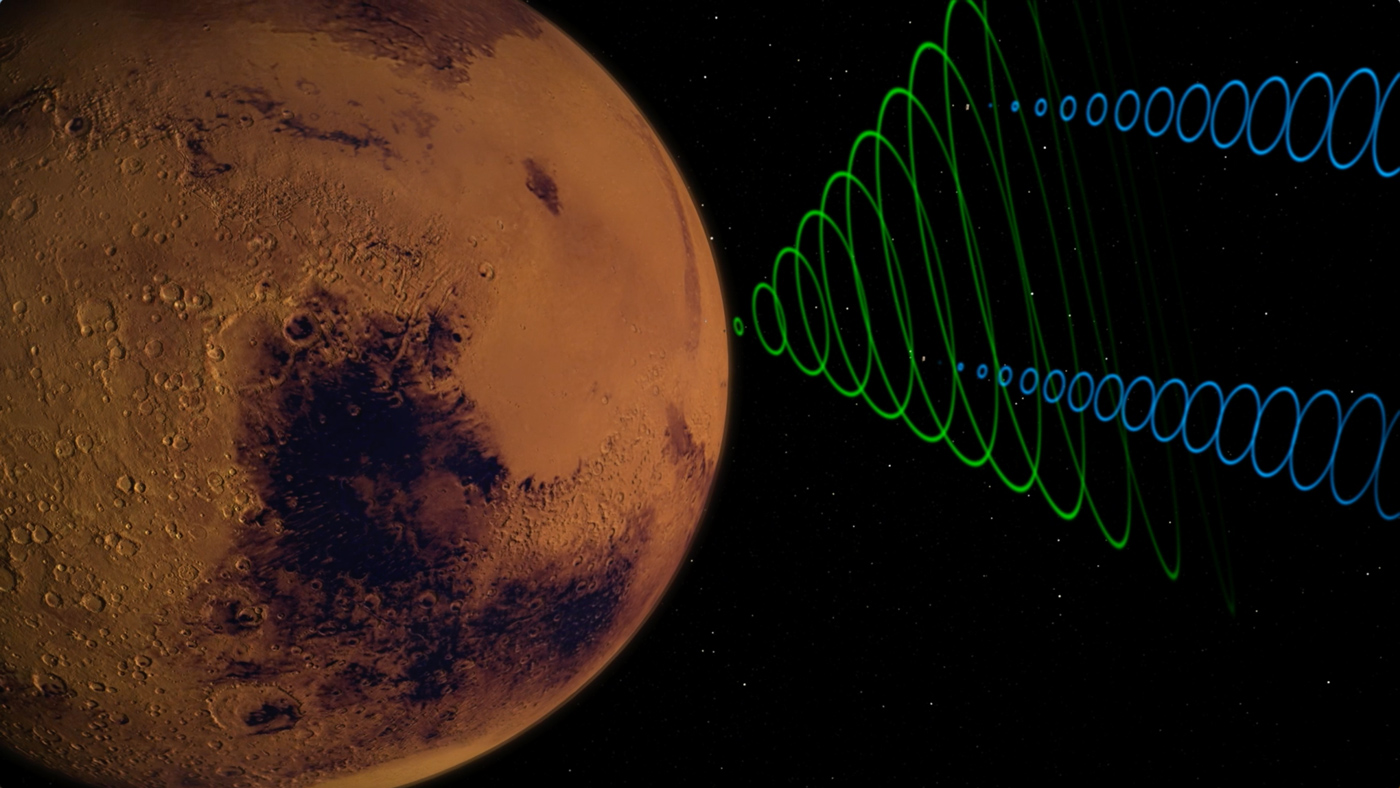Here's How NASA's Mars InSight Will Phone Home After Its Dramatic Landing
Like any dutiful creation, NASA's Mars InSight lander has promised to phone home upon safely reaching its destination on Nov. 26.
But it won't be a detailed conversation, and NASA engineers can't actually be sure when the call will come — or even whether it will come from the InSight lander itself. All told, the team has developed five separate communication routes that will help Earthlings track their creation's progress on the Red Planet.
InSight itself can produce two types of simple signals. During the landing process, it will produce steady tones of radio waves, which are affected by the sheer process of landing — their frequency will change as the spacecraft deploys its parachute and rapidly slows down, for example. [NASA's Mars InSight Lander: 10 Surprising Facts]
Once it has landed, InSight will produce two more beacon signals, 7 minutes apart and in different wavelengths. If engineers can catch the second of those two signals, which is particularly strong, they will be particularly pleased, since it means InSight is probably in good condition. Nevertheless, it will still be hours before they hear whether the lander unfurled its solar arrays uneventfully.
But because they're dealing with interplanetary travel, engineers have built in three possible alternative means of hearing from InSight, relying on other spacecraft at Mars. InSight's own tiny companions, the two cubesats that make up the Mars Cube One, or MarCO project, will be arriving at the Red Planet with the lander.
The MarCO engineers hope they will have the capacity to narrate the entire landing process for those of us on Earth, including relaying InSight's first photograph. But because the MarCO satellites are the first cubesats ever to leave Earth's orbit, the team can't be sure they will perform as planned.
Fortunately, there are two larger, more grizzled veteran NASA spacecraft orbiting Mars that will also be on hand to report back on the big day: the Mars Reconnaissance Orbiter and the 2001 Mars Odyssey. The first will be particularly helpful for tracing the entire landing process if it turns out that something went wrong, while the second will confirm that the lander's solar arrays have opened properly.
Breaking space news, the latest updates on rocket launches, skywatching events and more!
Of course, the problem with relying on so many different means of communication — and with Mars being 91 million miles (146 million kilometers) away as InSight lands — is that even if everything goes perfectly, we humans will be getting scattershot updates as events unfold.
NASA may know right away that InSight has made it, or it may be hours. We'll just have to wait and see.
Email Meghan Bartels at mbartels@space.com or follow her @meghanbartels. Follow us @Spacedotcom and Facebook. Original article on Space.com.

Meghan is a senior writer at Space.com and has more than five years' experience as a science journalist based in New York City. She joined Space.com in July 2018, with previous writing published in outlets including Newsweek and Audubon. Meghan earned an MA in science journalism from New York University and a BA in classics from Georgetown University, and in her free time she enjoys reading and visiting museums. Follow her on Twitter at @meghanbartels.

